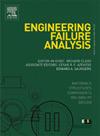结构状况评估的系统识别:应用于尼泊尔重要的新古典主义古迹
IF 4.4
2区 工程技术
Q1 ENGINEERING, MECHANICAL
引用次数: 0
摘要
本文采用非参数和参数系统识别技术,对尼泊尔一些重要的新古典主义古迹进行了结构状况评估。尼泊尔的新古典主义建筑是重要行政单位的所在地。因此,对这类建筑进行结构状况评估对于确保其居住者的安全以及在大地震期间和震后中断功能非常重要。这些古迹的历史和文化价值要求对其结构进行定期评估,以便进行维护、修理和保护。结构的动态特性(如自然振动频率)为了解其结构状况提供了宝贵的信息。虽然数字模型通常用于估算结构的特征频率,但对于结构和几何构造复杂的大型古迹来说,数字模型存在很大的不确定性。非侵入式动态识别技术为此类结构提供了一种替代方法。本研究使用了尼泊尔加德满都谷地六个新古典主义纪念碑的环境振动记录,以估算结构在不同状态下的振动频率。这些结构在 2015 年廓尔喀大地震中受损,随后进行了改造。改造前后振动频率的变化为通过改造改善结构提供了有益的启示。我们测试了输入输出和纯输出系统识别技术,以简化结构状态评估方法。我们得出的结论是,状态空间系统识别可以稳定地量化动态特性,从而有把握地提取刚度变化,这是无创结构系统识别的关键应用。此外,我们还利用最少的传感器数量,通过模态保证准则捕捉到了损坏加剧的情况。研究结果表明,使用有限数量的传感器就可以对复杂结构进行结构状况评估,例如从损伤加剧到动态特性的时间变化(演变/减少)。本文章由计算机程序翻译,如有差异,请以英文原文为准。
System identification for structural condition assessment: Application to critical neoclassical monuments in Nepal
This paper presents structural condition assessment of some critical neoclassical monuments in Nepal using nonparametric and parametric system identification techniques. Neoclassical buildings in Nepal house critical administrative units. Structural condition assessment of such buildings is therefore important for the safety of their occupants and interrupted function during and after major earthquakes. The historical and cultural values of such monuments necessitate regular structural assessment for maintenance, repair, and preservation. Dynamic characteristics such as natural vibration frequencies of structures provide valuable insights on their structural condition. While numerical models are commonly used to estimate eigen frequencies of structures, they are associated with large uncertainties in massive monuments with complex structural and geometrical configurations. Noninvasive dynamic identification techniques provide an alternative means in such structures. Ambient vibration records from six neoclassical monuments in the Kathmandu Valley, Nepal are used in this study to estimate vibration frequencies of the structures in different states. The structures were damaged during the 2015 Gorkha earthquake, and subsequently retrofitted. Changes in vibration frequencies before and after retrofitting provide useful insights on structural improvement through retrofitting. Input-output and output-only system identification techniques are tested to simplify the structural condition assessment approach. We conclude that the state space system identification can stably quantify dynamic properties so stiffness variation can be confidently extracted, which is the key application for noninvasive structural system identification. Also, using minimum number of sensors, we captured damage aggravation deploying the modal assurance criterion. The outcomes indicate that structural condition assessment of complex structures is possible using a limited number of sensors for circumstances such as damage aggravation to temporal variation (evolution/reduction) of dynamic characteristics.
求助全文
通过发布文献求助,成功后即可免费获取论文全文。
去求助
来源期刊

Engineering Failure Analysis
工程技术-材料科学:表征与测试
CiteScore
7.70
自引率
20.00%
发文量
956
审稿时长
47 days
期刊介绍:
Engineering Failure Analysis publishes research papers describing the analysis of engineering failures and related studies.
Papers relating to the structure, properties and behaviour of engineering materials are encouraged, particularly those which also involve the detailed application of materials parameters to problems in engineering structures, components and design. In addition to the area of materials engineering, the interacting fields of mechanical, manufacturing, aeronautical, civil, chemical, corrosion and design engineering are considered relevant. Activity should be directed at analysing engineering failures and carrying out research to help reduce the incidences of failures and to extend the operating horizons of engineering materials.
Emphasis is placed on the mechanical properties of materials and their behaviour when influenced by structure, process and environment. Metallic, polymeric, ceramic and natural materials are all included and the application of these materials to real engineering situations should be emphasised. The use of a case-study based approach is also encouraged.
Engineering Failure Analysis provides essential reference material and critical feedback into the design process thereby contributing to the prevention of engineering failures in the future. All submissions will be subject to peer review from leading experts in the field.
 求助内容:
求助内容: 应助结果提醒方式:
应助结果提醒方式:


